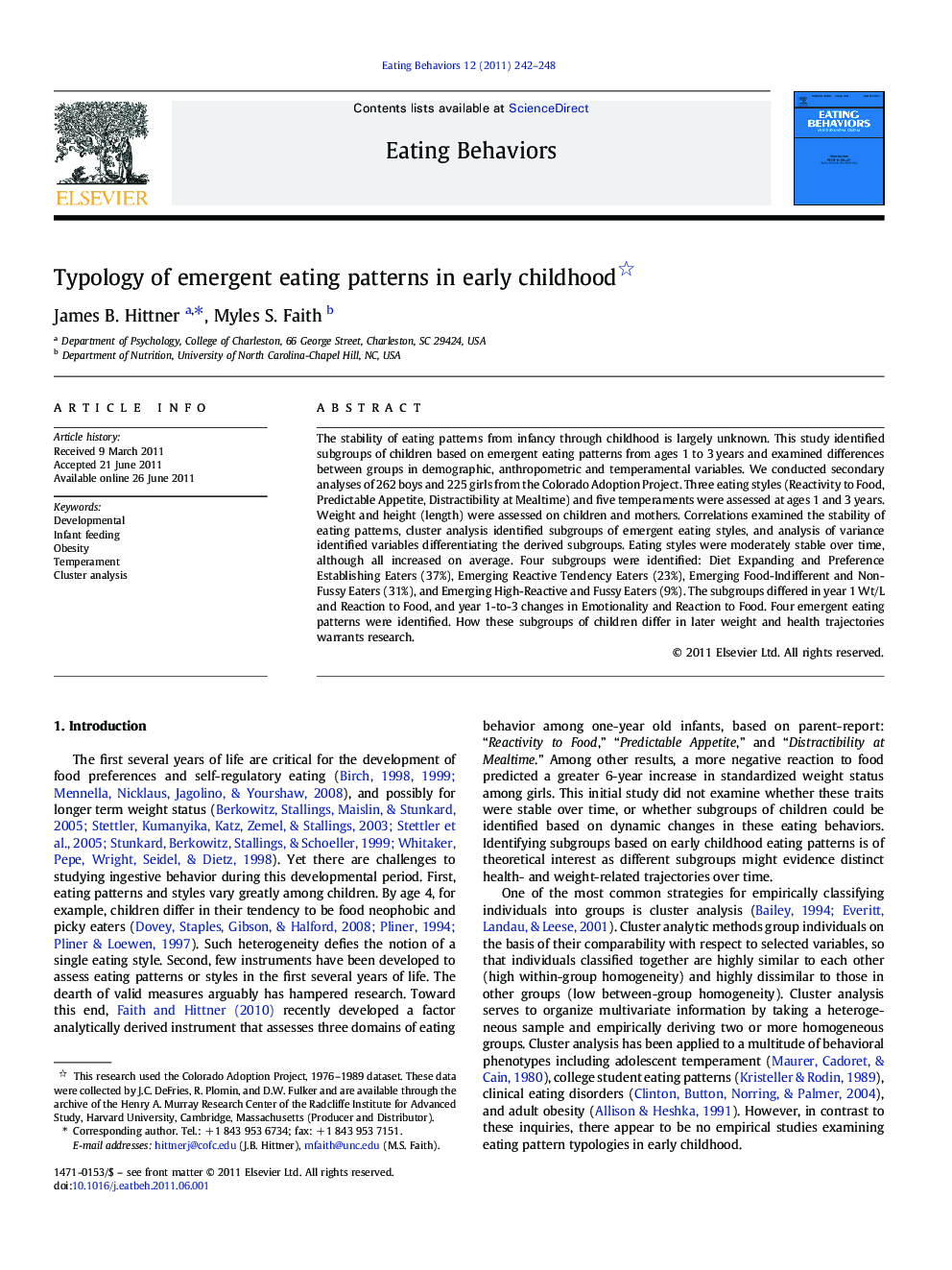| Article ID | Journal | Published Year | Pages | File Type |
|---|---|---|---|---|
| 906588 | Eating Behaviors | 2011 | 7 Pages |
The stability of eating patterns from infancy through childhood is largely unknown. This study identified subgroups of children based on emergent eating patterns from ages 1 to 3 years and examined differences between groups in demographic, anthropometric and temperamental variables. We conducted secondary analyses of 262 boys and 225 girls from the Colorado Adoption Project. Three eating styles (Reactivity to Food, Predictable Appetite, Distractibility at Mealtime) and five temperaments were assessed at ages 1 and 3 years. Weight and height (length) were assessed on children and mothers. Correlations examined the stability of eating patterns, cluster analysis identified subgroups of emergent eating styles, and analysis of variance identified variables differentiating the derived subgroups. Eating styles were moderately stable over time, although all increased on average. Four subgroups were identified: Diet Expanding and Preference Establishing Eaters (37%), Emerging Reactive Tendency Eaters (23%), Emerging Food-Indifferent and Non-Fussy Eaters (31%), and Emerging High-Reactive and Fussy Eaters (9%). The subgroups differed in year 1 Wt/L and Reaction to Food, and year 1-to-3 changes in Emotionality and Reaction to Food. Four emergent eating patterns were identified. How these subgroups of children differ in later weight and health trajectories warrants research.
► Cluster analysis identified four distinct subgroups of emergent eating styles. ► Emergent eating styles were moderately stable over time. ► The subgroups differed in year 1 weight-for-length and Reaction to Food. ► The subgroups differed in year 1-to-3 changes in Emotionality and Reaction to Food.
